Author: Peter Adams
Published by: Rhyme and Reason Books, Stroud Natural Health Clinic, England
First edition, 2010, paperback, 225 pages
ISBN : 978-0-9565694-0-0
Reviewer: Vatsala Sperling
Years ago, I was attending a seminar by Dr. Sankaran when I heard him say, “Do not worry about trying to convince the skeptics. Just practice good homeopathy.” This statement felt
soothing and reassuring. We need not bother convincing the skeptics because, as W. B. Yeats has said in the Second Coming, “The best lack all conviction, while the worst are full of passionate intensity.” The determined and well-funded skeptics are indeed full of passionate intensity and they proclaim their point of view loud and clear. We may choose to ignore or engage with the skeptics, but what about those who are open enough to come to our office seeking help from homeopathy but have no idea what it is? These are the people who would be delighted that Peter Adams has written a book that, in clear and no uncertain terms, re-establishes the “scientific” nature of homeopathy. Besides that, for all homeopaths in general, this book will come very handy in crystallizing our own experience, view and understanding of homeopathy as a science so that we can stand on solid grounds as we try to explain it to anyone who is curious enough.
While dealing with the question, “Is homeopathy scientific?” Peter mentions that homeopathy defies science (or the currently well-known and established scientific norms and parameters). The most fundamental laws of homeopathy – potentization, simillimum and holism – are baffling to the rigid and mechanistic view held by some of the scientific, medical and lay-people. They tend to take the easier route and deny the validity of homeopathy saying, “it cannot work” without giving credence to the fact that homeopathy is a different kind of science that they are yet to fully comprehend. They also ignore the fact that the commonly accepted criteria for conducting laboratory based and clinical research do not apply to homeopathy simply because homeopathy is based on an entirely different set of fundamental laws. To prove these laws, a whole new research methodology is needed and it is yet to be discovered. Even though the conventional and mechanistic science cannot validate homeopathy because it cannot understand and explain its laws, there are scores of clinical proofs and animal model research that conclusively establish that homeopathy works. Similarly, experiments have been done on plants to positive outcome. These experimental models test and provide proof of potentized remedies but cannot prove the law of similar and Peter concludes that very likely, the evidence against homeopathy is based on badly conducted trials and incorrect interpretation of results.
Further along in the book, Peter picks his way through the various modus operandi of anti-homeopathy groups, be it scientific community, critical-caustic-acerbic and irrational individuals as well as popular mass media and sets the record straight in support of homeopathy as a valid science.
In a powerful chapter titled “Dilution is not delusion” Peter walks the readers through the currently available and widely accepted scientific facts about water and its role in retaining the memory of a remedy being potentized – potentization being yet another fundamental law of homeopathy. Other basic laws of homeopathy, for example, like cures like, systems of life, and vital force. This writing helps us understand homeopathy in the light of currently accepted views and facts from metaphysics and complexity science.
In the concluding chapter, readers are given thought provoking ideas about homeopathy as the science of information printed on water using the technique of potentization and how, this information, when matched with the totality of the symptom picture, brings about healing. In all, 52 case studies are sprinkled throughout the book and presented as examples of healing action of homeopathy in various settings.
The most remarkable aspect of this book is the tone that Peter Adams has assumed in presenting the facts about homeopathy, how it is discredited, and what we, as homeopaths, can hang on to as we swear our allegiance to over 200 years old scientific and artistic system of healing discovered by Samuel Hahnemann. Throughout, Peter has remained calm, collected, witty, wise, smart, logical, and rational in presenting his side of facts and arguments without engaging in a shouting match with the opponents. This calmness is the strength of this book and Peter’s earnest striving for creating an understanding of homeopathy based on explanations and evidence from the latest modern science and clinical reports, brings this book to the forefront of introductory books on homeopathy, for example The Science of Homeopathy by George Vithoulkas.
In conclusion, after reading this book, I found myself thinking that an honest debate should be welcome. If someone wants to attack homeopathy, they are free to do so, but before making the vitriolic attack, as a prerequisite, they must study the Organon by Hahnemann and get a thorough understanding of the latest science that clearly explains the science behind homeopathy and besides this, they must also study the clinical evidence gathered over the past couple of centuries that support homeopathy all across the world. After such a study, if they still have a contrary view or evidence, they would have the necessary knowledge and the nomenclature to make a good argument. Anything less is not worthy of a serious scientist and homeopath’s time or attention.
Highly recommend this book for homeopaths, students and inquisitive learners from all walks of life.
